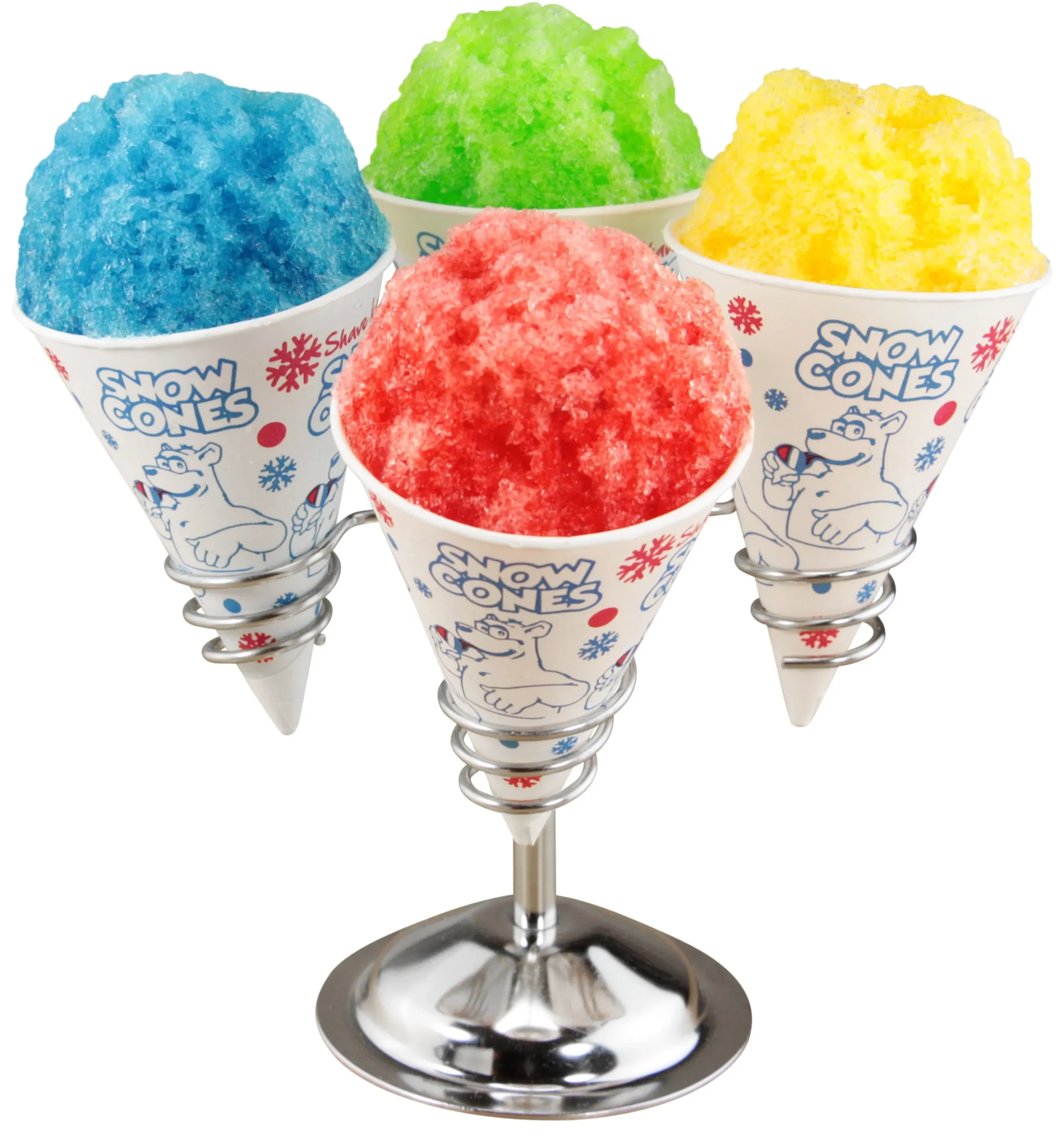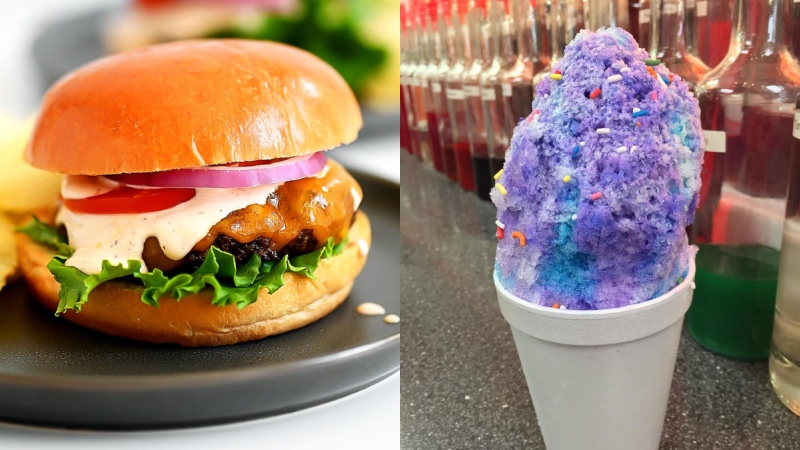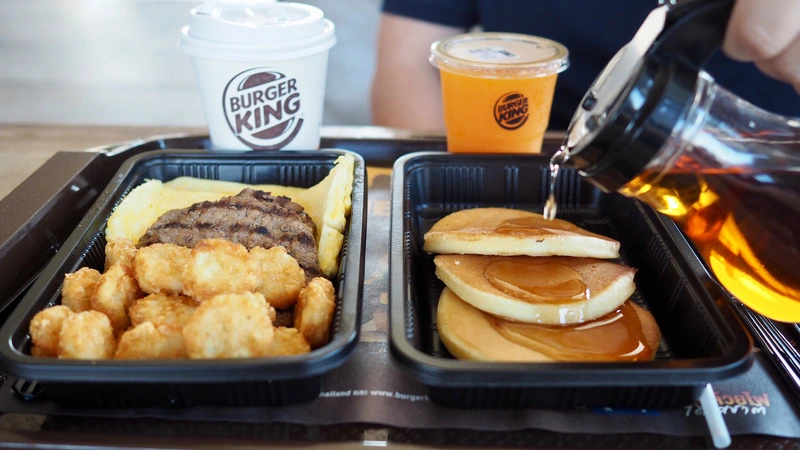Burgers and Grape Snow Cones: A Delicious Journey Through History and Evolution
Burgers and grape snow cones are iconic foods that have captivated taste buds worldwide. While burgers are a staple of hearty meals, grape snow cones evoke memories of refreshing treats on hot summer days. This article delves deeply into the origins, evolution, and cultural significance of these beloved foods, tracing their paths from ancient beginnings to modern-day innovations.
What is a Burger?
A burger, commonly known as a hamburger, consists of a ground meat patty, usually beef, placed inside a sliced bun. Burgers are often complemented with various toppings such as cheese, lettuce, tomatoes, pickles, onions, and condiments like ketchup, mustard, and mayonnaise. Variations include chicken, turkey, and plant-based patties, reflecting diverse dietary preferences.
Detailed History of the Burger
Ancient Origins
The concept of minced meat has ancient roots. The Mongols, led by Genghis Khan, would carry raw meat under their saddles to tenderize it as they rode. This method influenced the development of minced meat dishes in Russia, known as “Steak Tartare.” These early practices laid the groundwork for what would eventually become the hamburger.
Early Beginnings
The hamburger as we know it started to take shape in the 19th century. German immigrants brought the concept of Hamburg steaks to the United States. These steaks, named after Hamburg, Germany, were made of minced beef and served without buns. They were often seasoned with onions and breadcrumbs and were a popular dish among German immigrants.
The Birth of the Modern Hamburger
The modern hamburger emerged in the late 1800s and early 1900s. Several claims to its invention exist:
- Charlie Nagreen (1885): Known as “Hamburger Charlie,” he reportedly sold meatballs flattened between slices of bread at the Seymour Fair in Wisconsin. Nagreen’s innovation was driven by the need for a portable food item that fairgoers could eat while walking.
- Frank and Charles Menches (1885): These brothers claim to have invented the hamburger at the Erie County Fair in Hamburg, New York. According to their story, they ran out of pork for their sausage sandwiches and substituted beef, creating the hamburger.
- Oscar Weber Bilby (1891): Allegedly served the first-known hamburger on a bun in Tulsa, Oklahoma. Bilby’s hamburger was served on a yeast bun baked by his wife, making it the first documented instance of a hamburger bun.
The 1904 St. Louis World’s Fair
The hamburger gained widespread popularity at the 1904 St. Louis World’s Fair. Several vendors claimed to have introduced the sandwich at this event, helping it gain national recognition. The fair’s exposure was crucial in familiarizing Americans with the concept of the hamburger, leading to its integration into American cuisine.
Fast Food Revolution
The 1920s marked a turning point with the emergence of fast-food chains. White Castle, founded in 1921, was the first to standardize the burger-making process. Their success led to the establishment of other iconic chains, such as McDonald’s in the 1950s, which revolutionized the industry with its efficient production methods. White Castle’s emphasis on cleanliness, quality, and affordability set new standards in the fast-food industry.
Global Expansion
Today, burgers are a global phenomenon with countless variations tailored to regional tastes. From gourmet burgers featuring exotic ingredients to plant-based patties catering to vegetarians and vegans, the burger continues to evolve while maintaining its core identity. Countries around the world have embraced the burger, incorporating local flavors and ingredients to create unique versions.
What is a Grape Snow Cone?
A grape snow cone is a frozen dessert made by shaving ice into a fine, snow-like consistency and flavoring it with grape syrup. This treat is especially popular during the summer months for its refreshing quality. Snow cones are typically served in paper cones or cups and enjoyed as a cool, sweet treat.
Detailed History of the Grape Snow Cone
Ancient Roots
The concept of flavored ice dates back to ancient Rome. Emperor Nero would send runners to collect snow from the mountains, which was then flavored with fruit and honey. This early form of a frozen treat laid the foundation for the snow cone. Similar practices were also recorded in ancient Persia, where snow was mixed with grape juice and other fruit syrups to create “sharbat.”
Development in the United States
In the 19th century, ice became more accessible due to the invention of ice machines. This accessibility paved the way for the creation of snow cones. In 1919, Samuel Bert invented the first snow cone machine, which he showcased at the State Fair of Texas. His invention allowed for the mass production of shaved ice, making snow cones widely available. Bert’s machine was a significant innovation, allowing vendors to produce snow cones quickly and efficiently.
Popularity of Grape Flavor
Among the various flavors, grape has remained a favorite. The sweet and tangy flavor of grape syrup pairs perfectly with the icy texture, making it a popular choice for many. Grape flavoring, made from a combination of natural and artificial ingredients, has a distinct taste that resonates with consumers, evoking a sense of nostalgia and simplicity.
Cultural Significance
Grape snow cones, along with other flavors, are deeply ingrained in American culture. They are often associated with fairs, carnivals, and summer events, evoking nostalgia and joy. The simple pleasure of enjoying a snow cone on a hot day brings back memories of childhood, family outings, and carefree summer days.
Modern Innovations and Variations
Burgers
Gourmet Burgers
The burger has seen a renaissance with gourmet variations. Chefs use high-quality ingredients, unique toppings, and artisanal buns to create elevated burger experiences. Examples include truffle burgers, foie gras burgers, and burgers topped with premium cheeses. Restaurants like Shake Shack and In-N-Out Burger have gained fame for their gourmet approaches, blending quality with the classic burger format.
Health-Conscious Options
With a shift towards healthier eating, the burger landscape has adapted. Plant-based patties, such as those from Impossible Foods and Beyond Meat, offer vegetarian and vegan alternatives. Leaner meat options, such as turkey and chicken burgers, and whole-grain buns cater to health-conscious consumers. Additionally, gluten-free buns and organic ingredients are becoming more common, reflecting the growing demand for health-conscious choices.
Technological Innovations
Automation and robotics are streamlining burger production, ensuring consistency and efficiency. Virtual kitchens and food delivery apps are revolutionizing how burgers are prepared and delivered. Food science innovations, such as lab-grown meat, are poised to reduce the environmental impact of beef production. These advancements not only improve efficiency but also address sustainability concerns.
Snow Cones
Gourmet Snow Cones
The snow cone industry is also seeing transformations with gourmet and exotic flavors. Artisanal syrups made from natural ingredients offer a healthier take on this classic treat. Some vendors add alcohol to create “adult” snow cones, broadening their appeal. Gourmet snow cones often feature unique combinations like lavender lemonade or hibiscus tea, providing a sophisticated twist on a traditional treat.
Eco-Friendly Practices
Snow cone vendors are increasingly using biodegradable cups and spoons to reduce plastic waste. Natural and organic flavorings are becoming more popular, catering to health-conscious consumers and minimizing the use of artificial additives. Sustainable practices in sourcing and serving snow cones are gaining traction, reflecting broader environmental awareness.
Technological Advancements
Improvements in ice-shaving technology enhance the texture and consistency of snow cones. Customization options through digital kiosks and mobile apps are enhancing the consumer experience. New flavors and ingredients, such as CBD-infused syrups, are expanding the appeal of snow cones to new demographics. These advancements not only improve the quality of snow cones but also make them more accessible and appealing to a wider audience.
Social and Economic Impact
Economic Contributions
The Burger Industry
The burger industry significantly contributes to the global economy. Fast-food chains generate billions of dollars in revenue and provide millions of jobs worldwide. The demand for burger ingredients supports various agricultural sectors, including beef, dairy, and vegetable farming. The economic impact extends to suppliers, distribution networks, and ancillary businesses, creating a robust ecosystem around the burger industry.
Snow Cone Businesses
Snow cone stands and shops contribute to local economies, especially in tourist areas. Seasonal vendors generate substantial income during peak months. The industry supports manufacturers of ice machines, flavor syrups, and related products. Snow cone businesses also contribute to the vibrancy of local events, fairs, and festivals, enhancing community engagement and economic activity.
Social Impact
Burgers in Social Settings
Burgers are integral to social gatherings, such as backyard barbecues, family cookouts, and tailgate parties. These events foster community and family bonds. Burgers are also a staple at sporting events and festivals, contributing to the communal experience. The act of grilling and sharing burgers creates a sense of togetherness and celebration, transcending cultural and social boundaries.
Snow Cones as a Symbol of Summer
Grape snow cones symbolize the joy and freedom of summer. They are often associated with childhood memories of beach trips, fairs, and lazy afternoons. Enjoying a snow cone can create shared experiences and lasting memories. The simplicity and refreshment of a snow cone evoke feelings of nostalgia and happiness, making them a cherished part of summer traditions.
Environmental Considerations
Sustainable Practices in the Burger Industry
As awareness of environmental issues grows, the burger industry is adapting to more sustainable practices. Some restaurants source their ingredients locally to reduce carbon footprints. Others now offer plant-based burgers, reducing the environmental impact compared to traditional beef burgers. The industry is increasingly adopting sustainable packaging, energy-efficient cooking methods, and waste reduction initiatives. Efforts to minimize waste, use renewable energy, and source ingredients responsibly are reshaping the burger industry towards a more sustainable future.
Eco-Friendly Snow Cones
The snow cone industry is also embracing sustainability. Vendors are increasingly using biodegradable cups and spoons to reduce plastic waste. Additionally, some businesses are exploring natural and organic flavorings, minimizing the use of artificial additives and preservatives. These efforts help reduce the environmental impact while catering to health-conscious consumers. The adoption of eco-friendly practices in the snow cone industry reflects a broader trend towards sustainability and environmental stewardship.
The Future of Burgers and Grape Snow Cones
Technological Innovations
Burgers
Technological advancements are shaping the future of burgers. Automation and robotics are streamlining the cooking process, ensuring consistency and efficiency. Virtual kitchens and food delivery apps are revolutionizing how burgers are prepared and delivered. Innovations in food science, such as lab-grown meat, are poised to significantly reduce the environmental impact of beef production. These technologies promise to enhance the quality, sustainability, and accessibility of burgers, addressing both consumer demands and environmental concerns.
Snow Cones
For snow cones, advancements in ice-shaving technology are improving texture and consistency. Customization options through digital kiosks and mobile apps are enhancing the consumer experience. Additionally, the integration of new flavors and ingredients, such as CBD-infused syrups, is broadening the appeal of snow cones to new demographics. The future of snow cones lies in innovation, quality, and customization, ensuring they remain a beloved treat for generations to come.
Trends and Consumer Preferences
Burgers
The trend toward healthier eating is influencing the burger industry. Consumers are increasingly seeking organic, non-GMO, and antibiotic-free ingredients. The popularity of plant-based diets continues to rise, driving demand for innovative vegetarian and vegan burger options. Gourmet burgers, featuring unique and premium ingredients, are also attracting food enthusiasts looking for a sophisticated dining experience. As consumer preferences evolve, the burger industry is poised to adapt, offering diverse options that cater to varying tastes and dietary needs.
Snow Cones
For snow cones, the trend towards natural and artisanal flavors is gaining momentum. Consumers are looking for unique taste experiences, leading to the creation of exotic and gourmet flavors. There is also a growing interest in nostalgic flavors that evoke childhood memories. Health-conscious consumers are seeking snow cones made with natural sweeteners and organic ingredients. The future of grape snow cones is bright, with innovation and quality driving their continued popularity and cultural relevance.
Cultural Impact
The Burger’s Influence
Burgers have become a symbol of American culture and are celebrated worldwide. They are a staple at backyard barbecues, fast-food restaurants, and gourmet eateries. The cultural impact of burgers is evident in media, with countless movies, TV shows, and advertisements featuring this beloved food. The burger’s versatility and appeal have made it a global icon, representing comfort, indulgence, and culinary creativity.
Snow Cones in Popular Culture
Snow cones, particularly grape-flavored ones, evoke a sense of nostalgia and are often associated with childhood memories. They are a fixture at summer fairs, amusement parks, and beachside stands, symbolizing carefree summer days and simple pleasures. Snow cones have also found their way into popular culture, appearing in movies, TV shows, and literature as symbols of joy, refreshment, and the sweetness of summer.






Post Comment